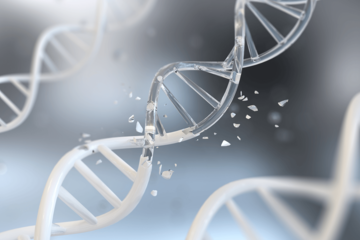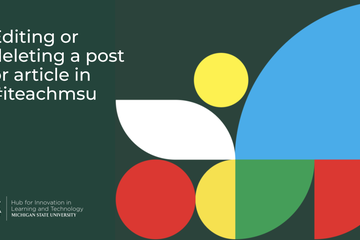Browse
Posted on: #iteachmsu

DISCIPLINARY CONTENT
Genetics and Molecular Biolog
Ref: http://www.scielo.br/revistas/gmb/iaboutj.htm#001
Genetics and Molecular Biology is abstracted or indexed in:
PubMed
Science Citacion Index Expanded
Current Contents/Life Sciences
ISI Web of Science
Biotechnology Citation Index
Biological Abstracts
Excerpta Medica
Genetics Abstracts
Animal Breeding Abstracts
Plant Breeding Abstracts
Chemical Abstracts
Referativnyi Zhurnal (Abstracts Journal, Russia)
Periódica (UNAM-Mexico)
Lilacs
Genetics and Molecular Biology is abstracted or indexed in:
PubMed
Science Citacion Index Expanded
Current Contents/Life Sciences
ISI Web of Science
Biotechnology Citation Index
Biological Abstracts
Excerpta Medica
Genetics Abstracts
Animal Breeding Abstracts
Plant Breeding Abstracts
Chemical Abstracts
Referativnyi Zhurnal (Abstracts Journal, Russia)
Periódica (UNAM-Mexico)
Lilacs
Posted by:
Scarlet Ethan Edien

Posted on: #iteachmsu


Genetics and Molecular Biolog
Ref: http://www.scielo.br/revistas/gmb/iaboutj.htm#001
G...
G...
Posted by:
DISCIPLINARY CONTENT
Wednesday, Dec 23, 2020
Posted on: #iteachmsu

NAVIGATING CONTEXT

Posted on: #iteachmsu


Go back test
dsfsdfdsfsdf
Authored by:
NAVIGATING CONTEXT
Thursday, Dec 17, 2020
Posted on: #iteachmsu

ASSESSING LEARNING

Posted on: #iteachmsu


Test Image resize
dasdasdsadsada
Authored by:
ASSESSING LEARNING
Thursday, Dec 17, 2020
Posted on: #iteachmsu

The economic impact of COVID-19
https://www.google.com/search?q=Learning+Communities+are+Spaces+to+Explore+Ideas&rlz=1C5GCEA_enLK882LK883&oq=Learning+Communities+are+Spaces+to+Explore+Ideas+&aqs=chrome..69i57j69i59i450l7.218j0j15&sourceid=chrome&ie=UTF-8
The COVID-19 outbreak was triggered in December 2019 in the city of Wuhan, which is in the Hubei province of China. The virus continues to spread across the world. Although the epicentre of the outbreak was initially China, with reported cases either in China or in travellers from the country, cases now are being reported in many other countries. While some countries have been able to effectively treat reported cases, it is uncertain where and when new cases will emerge. Amidst the significant public health risk COVID-19 poses to the world, the World Health Organization (WHO) has declared a public health emergency of international concern to coordinate international responses to the disease. It is, however, currently debated whether COVID-19 could potentially escalate to a global pandemic. In a strongly connected and integrated world, the impacts of the disease beyond mortality (those who die) and morbidity (those who are unable to work for a period of time) has become apparent since the outbreak. Amidst the slowing down of the Chinese economy with interruptions to production, the functioning of global supply chains has been disrupted. Companies across the world, irrespective of size, that are dependent upon inputs from China have started experiencing contractions in production. Transport being limited and even restricted among countries has further slowed global economic activities. Most importantly, some panic among consumers and firms has distorted usual consumption patterns and created market anomalies. Global financial markets have also been responsive to the changes and global stock indices have plunged.
The COVID-19 outbreak was triggered in December 2019 in the city of Wuhan, which is in the Hubei province of China. The virus continues to spread across the world. Although the epicentre of the outbreak was initially China, with reported cases either in China or in travellers from the country, cases now are being reported in many other countries. While some countries have been able to effectively treat reported cases, it is uncertain where and when new cases will emerge. Amidst the significant public health risk COVID-19 poses to the world, the World Health Organization (WHO) has declared a public health emergency of international concern to coordinate international responses to the disease. It is, however, currently debated whether COVID-19 could potentially escalate to a global pandemic. In a strongly connected and integrated world, the impacts of the disease beyond mortality (those who die) and morbidity (those who are unable to work for a period of time) has become apparent since the outbreak. Amidst the slowing down of the Chinese economy with interruptions to production, the functioning of global supply chains has been disrupted. Companies across the world, irrespective of size, that are dependent upon inputs from China have started experiencing contractions in production. Transport being limited and even restricted among countries has further slowed global economic activities. Most importantly, some panic among consumers and firms has distorted usual consumption patterns and created market anomalies. Global financial markets have also been responsive to the changes and global stock indices have plunged.
Posted by:
Scarlet Ethan Edien

Posted on: #iteachmsu


The economic impact of COVID-19
https://www.google.com/search?q=Learning+Communities+are+Spaces+to+...
Posted by:
Tuesday, Dec 15, 2020
Posted on: #iteachmsu

NAVIGATING CONTEXT
Mechanism of PEP
First of all, the conditions of the realization of the PEP among other electrolyte-plasma processes are considered. PEP of metals and alloys is performed only with the anode polarity of the part. In the 1970s, it was found that the anodic stationary heating in sulphuric acid solutions ceases at voltages of 180–260 V (at 250–290 V in solutions of ammonium chloride or at 140 V or more in sodium hydroxide solutions) [56]. In this case, the temperature of the sample drops sharply, and the colour of the glow of the VGE changes. Currently, PEP is carried out at approximately such voltages, therefore, in this article the mode under discussion will be called the polishing mode, because the adjective “electro hydrodynamic” used in a number of publications does not reflect the essence of the process. There are some problematic issues of the PEP mechanism. They are the nature of the current through the vapour-gaseous layer, the mechanisms of metal removal and surface levelling, the presence of the gas layer (plasma) in contact with the metal surface or with the oxide (oxide-salt film) on its surface, as well as the present of at least short-term local contacts of the electrolyte with the surface of the metal or oxide film [57].
The nature of the removal of metal from the treated surface is associated with the mechanism of the passage of current through the VGE, which three types of charge carriers can realize.
The nature of the removal of metal from the treated surface is associated with the mechanism of the passage of current through the VGE, which three types of charge carriers can realize.
Posted by:
Rohit 936 shinde

Posted on: #iteachmsu


Mechanism of PEP
First of all, the conditions of the realization of the PEP among ot...
Posted by:
NAVIGATING CONTEXT
Friday, Dec 11, 2020
Posted on: #iteachmsu

Polishing methods for metals and alloys.
As before, the traditional abrasive polishing is not only widely used, but also is being improved. An optimization of polishing regimes (contact load, tool feed rate and reciprocating frequency) can significantly increase in the durability of titanium alloys by improving the surface stress state [1]. A theoretical model is proposed to optimize the regimes of the tool movement and prediction of the material removal profile [2]. The duration of mechanical polishing can be markedly reduced using a diamond coated tool deposited from the gaseous phase [3] including for polishing aluminium-silicon alloys [4]. An abrasive polishing of brass is also recommended with a gradual transition from wet regime to dry one which provides a removal of abrasive particles from the treated surface [5]. A new polishing method of zirconium dioxide enables to change in the rheological properties of the suspension [6].
Posted by:
Rohit 936 shinde

Posted on: #iteachmsu


Polishing methods for metals and alloys.
As before, the traditional abrasive polishing is not only widely us...
Posted by:
Friday, Dec 11, 2020
Posted on: #iteachmsu

PEDAGOGICAL DESIGN
Compressive and tensile strengths
Compressive and tensile strengths
Results of compressive strength, relative compressive strength, and splitting tensile strength are presented in Fig. 2, Fig. 3, Fig. 4 , respectively. The tests were performed on three samples for each mixture design. Regarding the results, the compressive strength of specimens containing Trass is 35% lower than that of the plain concrete at early ages which could be due to the low pozzolanic activity. At early ages, low pozzolanic activity reduces the participation of cement materials in hydration. However, gradually, at the late age of 90 days, the compressive strength of T-32 is relatively improved and is 14% lower than that of R-32. This indicates the fact that Trass has compensated its lag in production of C–S–H gel. According to Fig. 3, until the age of 7 days, the percentage of compressive strength improvement for the specimens which contain natural pozzolan is 17% lower than that of the plain concrete; however, the percentage is relatively stable from 28 days to 90 days. Moreover, due to the fact that tensile strength has a direct relationship with compressive strength, the same trend can be seen from the results. Tensile strength values signify that, the tensile strength of T-32 is 12% lower than that of R-32. The 0.06% air-entraining agent is an important factor in the decrease of compressive and tensile strengths. According to the results, the compressive and tensile strengths for T-A-32 is 7% and 5% lower than that of T-32 at the age of 90 days, which is probably related to a higher void content due to the air-entraining agent. Furthermore, T-A-32 compared with R-A-32 has 11% and 10% higher compressive and tensile strengths, respectively, at the late age of 90 days; this could be due to the
Results of compressive strength, relative compressive strength, and splitting tensile strength are presented in Fig. 2, Fig. 3, Fig. 4 , respectively. The tests were performed on three samples for each mixture design. Regarding the results, the compressive strength of specimens containing Trass is 35% lower than that of the plain concrete at early ages which could be due to the low pozzolanic activity. At early ages, low pozzolanic activity reduces the participation of cement materials in hydration. However, gradually, at the late age of 90 days, the compressive strength of T-32 is relatively improved and is 14% lower than that of R-32. This indicates the fact that Trass has compensated its lag in production of C–S–H gel. According to Fig. 3, until the age of 7 days, the percentage of compressive strength improvement for the specimens which contain natural pozzolan is 17% lower than that of the plain concrete; however, the percentage is relatively stable from 28 days to 90 days. Moreover, due to the fact that tensile strength has a direct relationship with compressive strength, the same trend can be seen from the results. Tensile strength values signify that, the tensile strength of T-32 is 12% lower than that of R-32. The 0.06% air-entraining agent is an important factor in the decrease of compressive and tensile strengths. According to the results, the compressive and tensile strengths for T-A-32 is 7% and 5% lower than that of T-32 at the age of 90 days, which is probably related to a higher void content due to the air-entraining agent. Furthermore, T-A-32 compared with R-A-32 has 11% and 10% higher compressive and tensile strengths, respectively, at the late age of 90 days; this could be due to the
Posted by:
Scarlet Ethan Edien

Posted on: #iteachmsu


Compressive and tensile strengths
Compressive and tensile strengths
Results of compressive stre...
Results of compressive stre...
Posted by:
PEDAGOGICAL DESIGN
Friday, Dec 11, 2020
Posted on: #iteachmsu

DISCIPLINARY CONTENT
Performance assessment of natural pozzolan roller compacted concrete pavements
Concrete pavement is cost effective and beneficial because of its sustainability and durability. The maintenance and renovation periods for such pavement compared to other pavements are relatively long; however, a significant issue with pavements, especially roller compacted concrete pavements (RCCP), is salt scaling which occurs due to saline solutions such as deicer salts. In the present work, the performance of RCC containing a natural pozzolan called Trass, as a supplementary cementitious material, and an air-entraining agent for salt scaling was investigated. Mechanical and durability tests were performed on specimens containing a water to binder ratio of 0.32, with and without Trass, and an air-entraining agent. It was concluded that, Trass could not improve the compressive and tensile strengths, however, the permeability was improved. Moreover, the amount of mass loss due to salt scaling was not decreased. In all concrete mixtures, using a suitable amount of an air-entraining agent to maintain a total air content of 4.5–5% was found to be necessary for producing RCC containing Trass.
Authored by:
S.A.Ghahari

Posted on: #iteachmsu


Performance assessment of natural pozzolan roller compacted concrete pavements
Concrete pavement is cost effective and beneficial because of ...
Authored by:
DISCIPLINARY CONTENT
Friday, Dec 11, 2020

